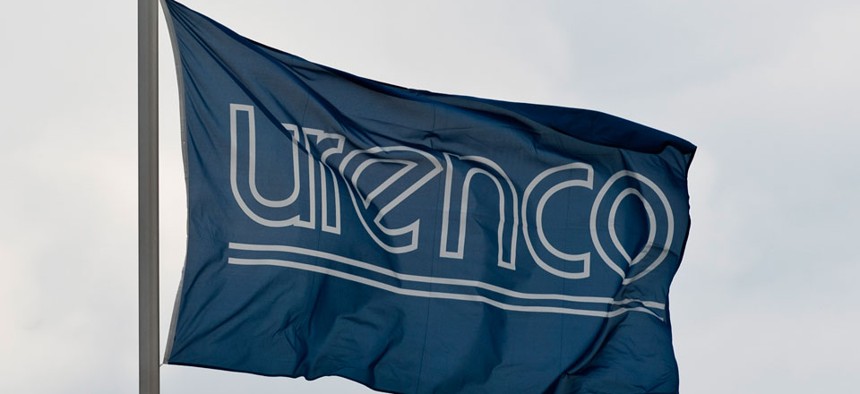Experimental Uranium Tech Receives $62 Million Boost from U.S.

Jens Schlueter/AP
Funding is part of a set-aside in the 2014 spending bill signed into law this month.
A cash-strapped U.S. effort to develop new uranium-enrichment technology is receiving $62 million in federal assistance, the New York Times reports.
The fiscal 2014 spending bill signed into law this month sets aside nuclear-weapons funds for work on new equipment at the United States Enrichment Corporation's American Centrifuge Plant in Ohio, the newspaper reported on Monday. The domestic design of the experimental machines might someday give them a crucial role in manufacturing tritium, a hydrogen isotope critical for boosting the explosive power of U.S. nuclear arms.
This month's omnibus appropriations legislation also gives the Energy Department an additional $56 million that might eventually go to USEC. The company -- the only uranium-enrichment enterprise headquartered in the United States -- in December said it planned to file for bankruptcy early this year.
The Obama administration so far has rejected USEC's requests for a federally backed $2 billion loan in support of the centrifuge initiative. Such an arrangement would require the government to assume responsibility for the expense if the company cannot pay back the borrowed funds.
The Energy Department has said USEC must finalize acquisition deals for building the new centrifuges before such financial support could be possible, according to the Times. In addition, the firm must convince Energy Department officials that its equipment could operate for years with almost no problem.
After potentially receiving $2 billion under a lending plan with Washington, USEC would still have to pull together an equal amount from other sources, the newspaper said.
The company has argued that its centrifuges would have an edge over technology used by Urenco, a European firm with an enrichment plant in New Mexico.
"The Urenco machine is reaching the end of its development maturity in terms of efficiencies and cost," USEC spokesman Paul Jacobson told the Times in an e-mail. "In contrast, the American Centrifuge machine is in the early stages of its technological development, value engineering and cost efficiencies."





